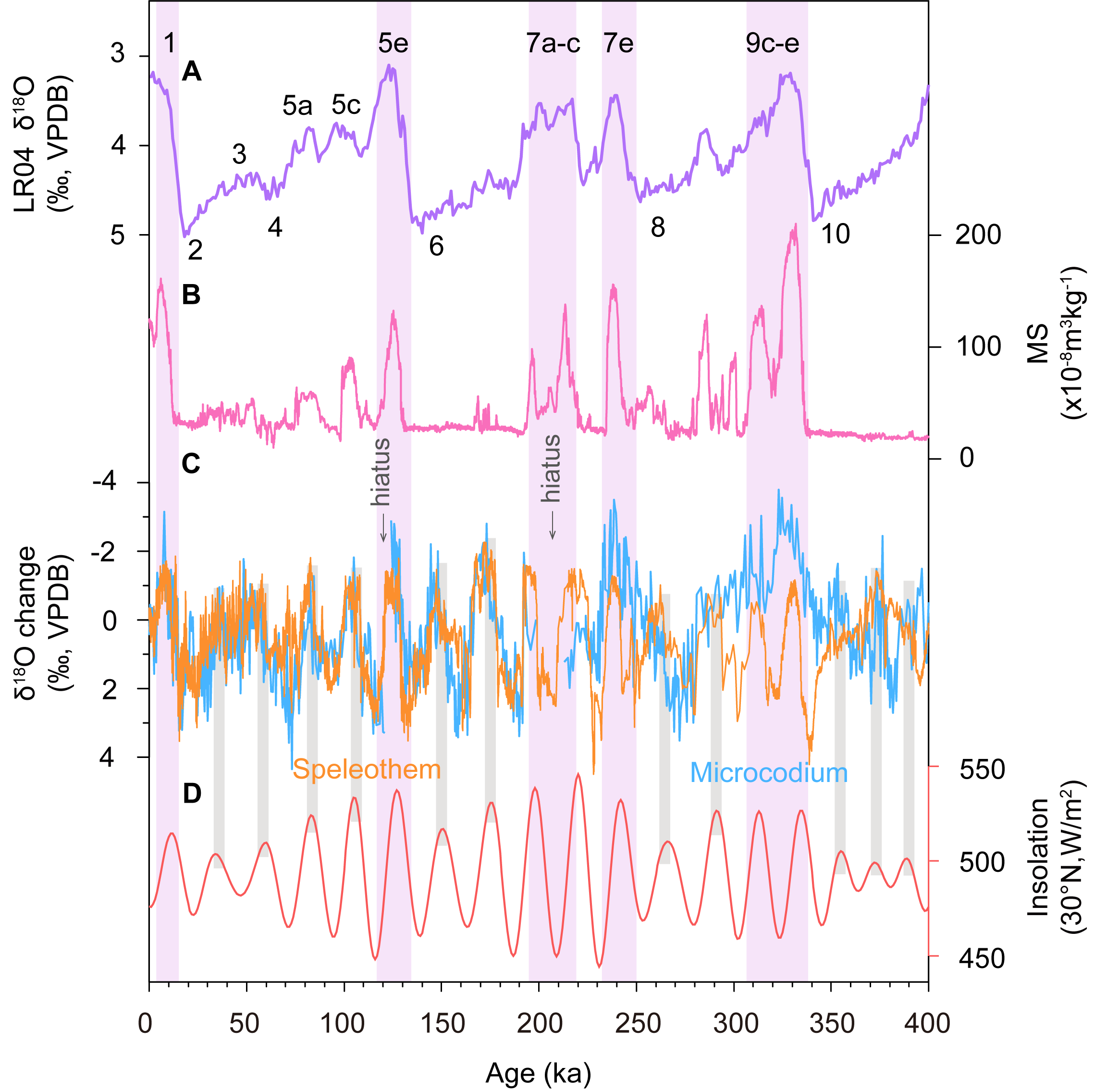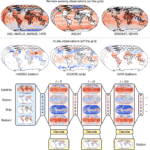2025-07-12 中国科学院(CAS)
 Comparison of records over the past 400,000 years. (A) Marine benthic foraminifera δ¹⁸O (Lisiecki and Raymo, 2005); (B) Loess magnetic susceptibility (Sun et al., 2021); (C) Microcodium δ¹⁸O record and speleothem δ¹⁸O record (Cheng et al., 2016); (D) Summer insolation at 30°N (Laskar et al., 2004). (Image by ZHANG Zeke, et al)
Comparison of records over the past 400,000 years. (A) Marine benthic foraminifera δ¹⁸O (Lisiecki and Raymo, 2005); (B) Loess magnetic susceptibility (Sun et al., 2021); (C) Microcodium δ¹⁸O record and speleothem δ¹⁸O record (Cheng et al., 2016); (D) Summer insolation at 30°N (Laskar et al., 2004). (Image by ZHANG Zeke, et al)
<関連情報>
- https://english.cas.cn/newsroom/research_news/earth/202507/t20250708_1046992.shtml
- https://www.pnas.org/doi/10.1073/pnas.2425565122
東アジアにおける黄土の微小コディアムδ18Oから明らかになった洞窟試料δ18Oの夏と非夏の気候シグナルSummer and nonsummer climatic signals in speleothem δ18O revealed by loess microcodium δ18O in East Asia
Zeke Zhang, Zhengyu Liu , Gaojun Li , +17 , and Zhisheng An
Proceedings of the National Academy of Sciences Published:July 11, 2025
DOI:https://doi.org/10.1073/pnas.2425565122
Significance
For decades, scientists have struggled to explain why Chinese cave oxygen isotope records fail to show the clear impact of ice age cycles associated with Earth’s orbit changes, which otherwise offer valuable insights into the Asian summer monsoon and natural climate changes. By studying calcium carbonate in windblown dust deposits northwest of the cave sites, we identified distinct signatures of these ice age cycles that were absent in the cave oxygen isotope records. Combined with climate simulations, we demonstrate that the cave oxygen isotope records from southeast China incorporate precipitation signals from different seasons rather than reflecting exclusively summer precipitation. This breakthrough has broader implications for interpreting cave oxygen isotope records worldwide by emphasizing the role of precipitation seasonality.
Abstract
Speleothem δ18O records from central southern China have long been regarded as a key benchmark for Asian summer monsoon intensity. However, the similar δ18O minima observed among precession minima and their link to seasonal precipitation mixing remains unclear. Here, we present a 400,000-y record of summer precipitation δ18O from loess microcodium, which captures distinct precession cycles similar to those seen in speleothem δ18O records, particularly during glacial periods. Notably, our microcodium δ18O record reveals very low-δ18O values during precession minima at peak interglacials, a feature absent in speleothem δ18O records from central southern China. This discrepancy suggests that the mixed summer and nonsummer climatic signals substantially influence the speleothem δ18O records from central southern China. Proxy-model comparisons indicate that the lack of very low-δ18O values in speleothem δ18O records is due to an attenuated summer signal contribution, resulting from a lower summer-to-annual precipitation ratio in southern China at strong monsoon intervals. Our findings offer a potential explanation for the long-standing puzzle of the absence of 100- and 41-kyr cycles in speleothem δ18O records and underscore the critical role of seasonality in interpreting paleoclimatic proxies in central southern China. These insights also have broader implications for interpreting speleothem δ18O records globally, advocating for a more multiseason interpretive framework.



